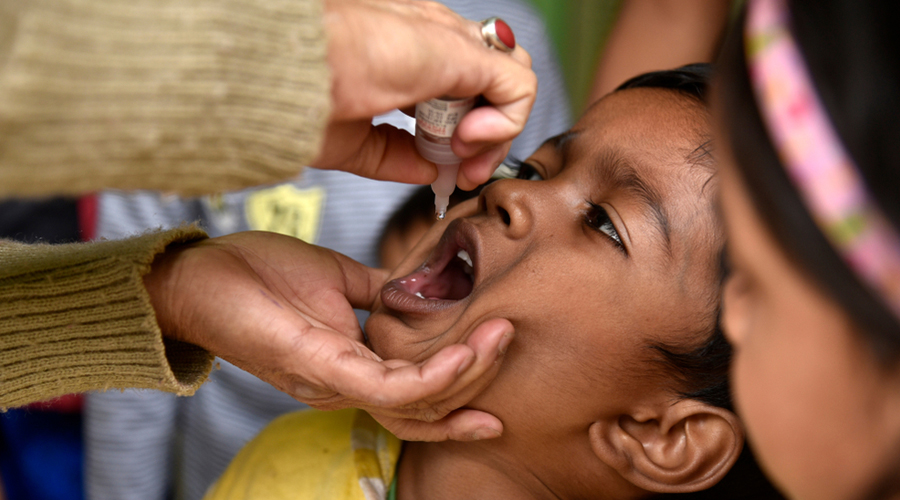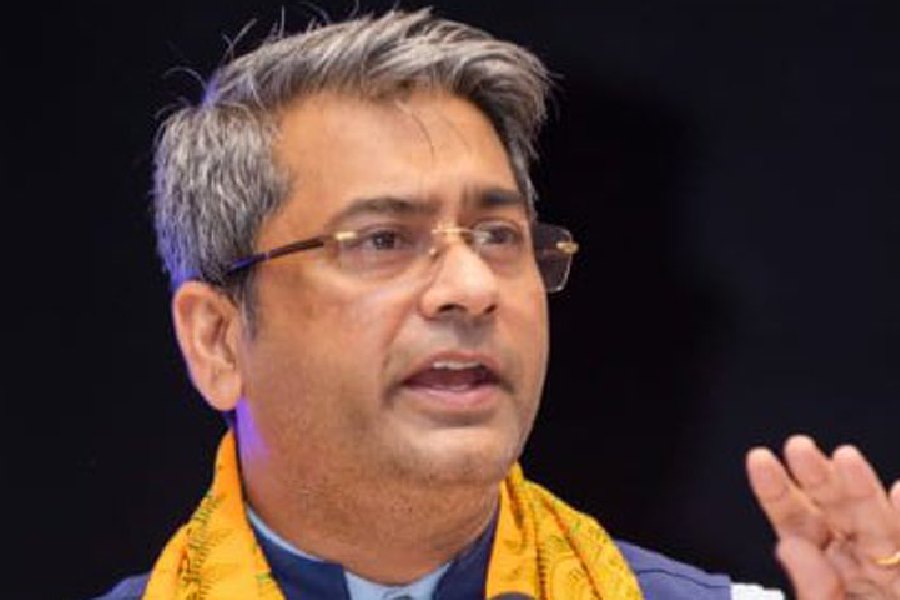The Centre’s Economic Survey has attributed Bengal’s poor performance on certain primary health measures to the state’s decision not to adopt the nationwide health insurance scheme that covers hospitalisation costs for poor households, baffling health experts who say the connection is far-fetched.
The survey, released by the Union finance ministry on Friday, has said Assam, Bihar and Sikkim, which have adopted the Pradhan Mantri Jan Aarogya Yojana (PMJAY), have shown greater improvements in infant mortality, family planning services and vaccinations than has Bengal.
But sections of health experts and health economists have questioned the wisdom of citing the PMJAY — a scheme that pays for hospitalisation — as a source of gains in primary health measures. One expert said the PMJAY chapter’s reference to Bengal appeared to have been crafted with “a political motivation” to cast Bengal in poor light.
The PMJAY, launched by the Narendra Modi government in September 2018, is a government-funded insurance scheme that provides cashless hospitalisation services to eligible households, paying up to Rs 5 lakh per year per household.
Since its launch, it has supported over 1.5 million hospitalisations, providing treatment and surgical services to patients with cancers, cardiovascular diseases, kidney failure, bone problems, obstetric and gynaecological conditions and other health disorders.
The survey said the proportion of households covered by health insurance had increased overall by 54 per cent in states that had implemented the PMJAY, but only by 10 per cent in the four states — Bengal, Delhi, Odisha and Telangana — that have not adopted it.
In Bengal, the proportion of households covered by health insurance has fallen by 12 per cent between 2015-16 and 2019-20, while the proportion of such households has increased by 89 per cent in the three neighbouring states, the survey said.
The survey has cited differences in infant mortality, under-five child mortality, usage of contraception pills and family planning services and postnatal care between Bengal and the three states to argue that the PMJAY has had a beneficial impact on health measures.
For instance, infant mortality fell by 20 per cent in Bengal between 2015-16 and 2019-20, but by 28 per cent in Assam, Bihar and Sikkim. The adoption of contraception and family planning services increased by 22 to 36 per cent in the three states but showed negligible changes in Bengal. Vaccination coverage for three doses of the pentavalent vaccine (against five infections) or the hepatitis B vaccine increased by 5 per cent in Bengal but by 19 per cent in the three states, the survey has said.
The survey has said while some of these measures “stemmed directly from enhanced care enabled by insurance coverage, others represent spill over effects”. But health analysts have pointed out that the PMJAY supports hospital admissions and does not include primary health services.
“It is disconcerting and disappointing to see a prestigious government publication offer such incorrect analysis using inappropriate indicators and single out one state to argue that the PMJAY has been a successful scheme,” said Indrani Gupta, professor in the health policy research unit at the Institute of Economic Growth, New Delhi.
Gupta said since the PMJAY was not designed to address primary and preventive health, the only relevant indicator to evaluate its performance and impact would be household out-of-pocket expenditure on hospitalisation costs.
Another health economist, Indranil Mukhopadhyaym who teaches at the OP Jindal University and is a member of the Jan Swasthya Abhiyan, a non-government network of health groups, also said the analysis linking the PMJAY with primary health measures “makes no sense”.
“Claims that the improvements in the uptake of family planning services or vaccination coverage are because of the PMJAY are to say the least far-fetched,” Mukhopadhyay said. “They appear to be politically motivated and it is surprising to see such content in the Economic Survey.”
A senior official in the National Health Authority that manages the PMJAY told The Telegraph that while the scheme itself provides only hospitalisation support, it has “indirect benefits” that could emerge from “enhanced awareness” about health care among the population.
But Gupta and others point out that the Economic Survey has a wide readership that includes economists, researchers and students within and outside India that requires the architects of the survey to remain objective.
“The content of the chapter on the PMJAY raises the question whether the survey can be still treated as a reliable source of objective and analytical situational assessments of the country,” Gupta said.
On some measures cited by the report, Mukhopadhyay and others point out, Bengal has higher absolute scores than the three states. Bengal, for instance, had 92 per cent institutional births in 2019-20 compared with 85 per cent in the three states.
Bengal also had a higher proportion of births managed by a skilled birth attendant (94 per cent) compared with 87 per cent in Assam, Bihar and Sikkim. The survey itself has said Bengal has had larger increases in institutional births and births managed by skilled attendants than the three states.











